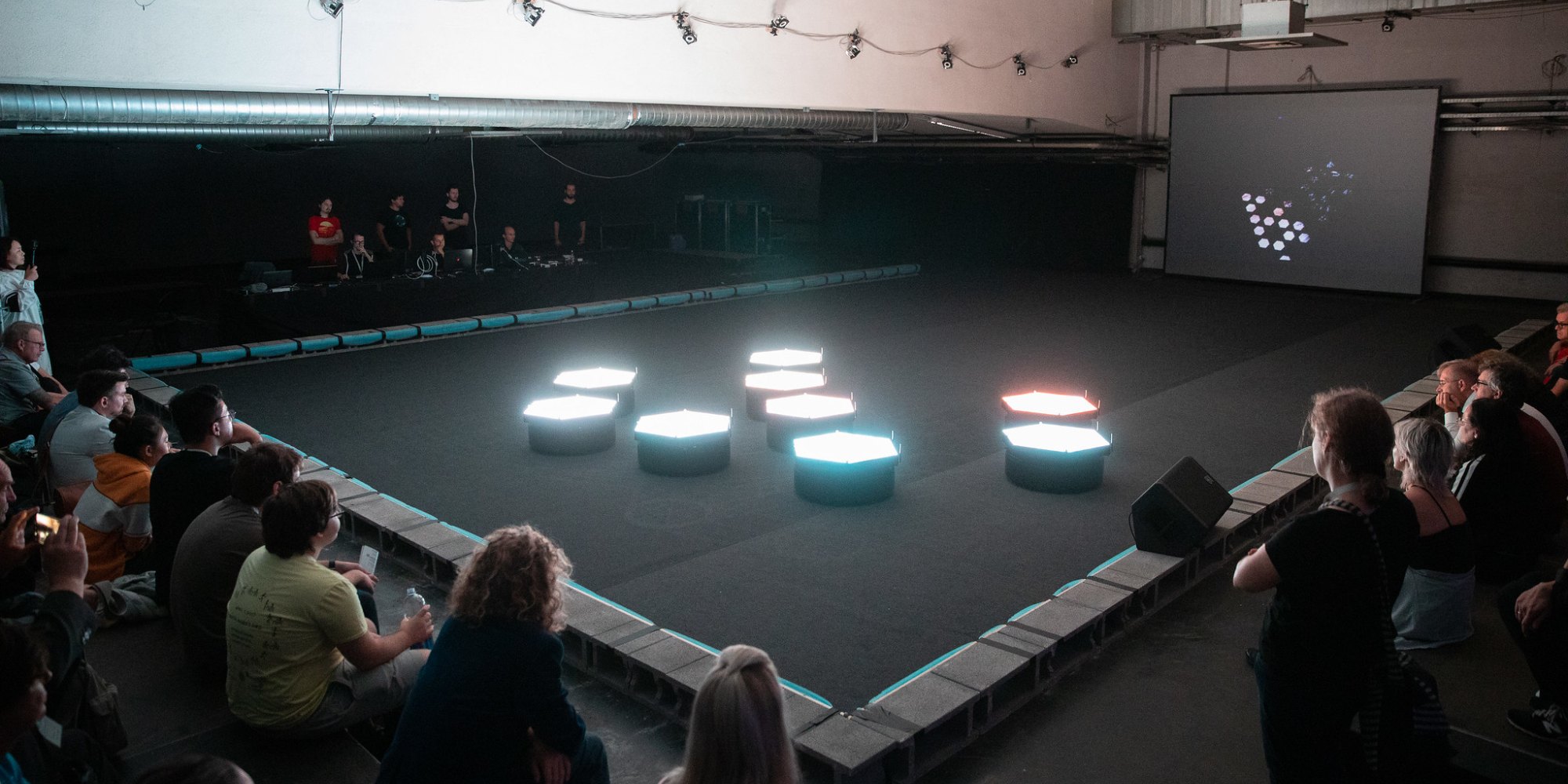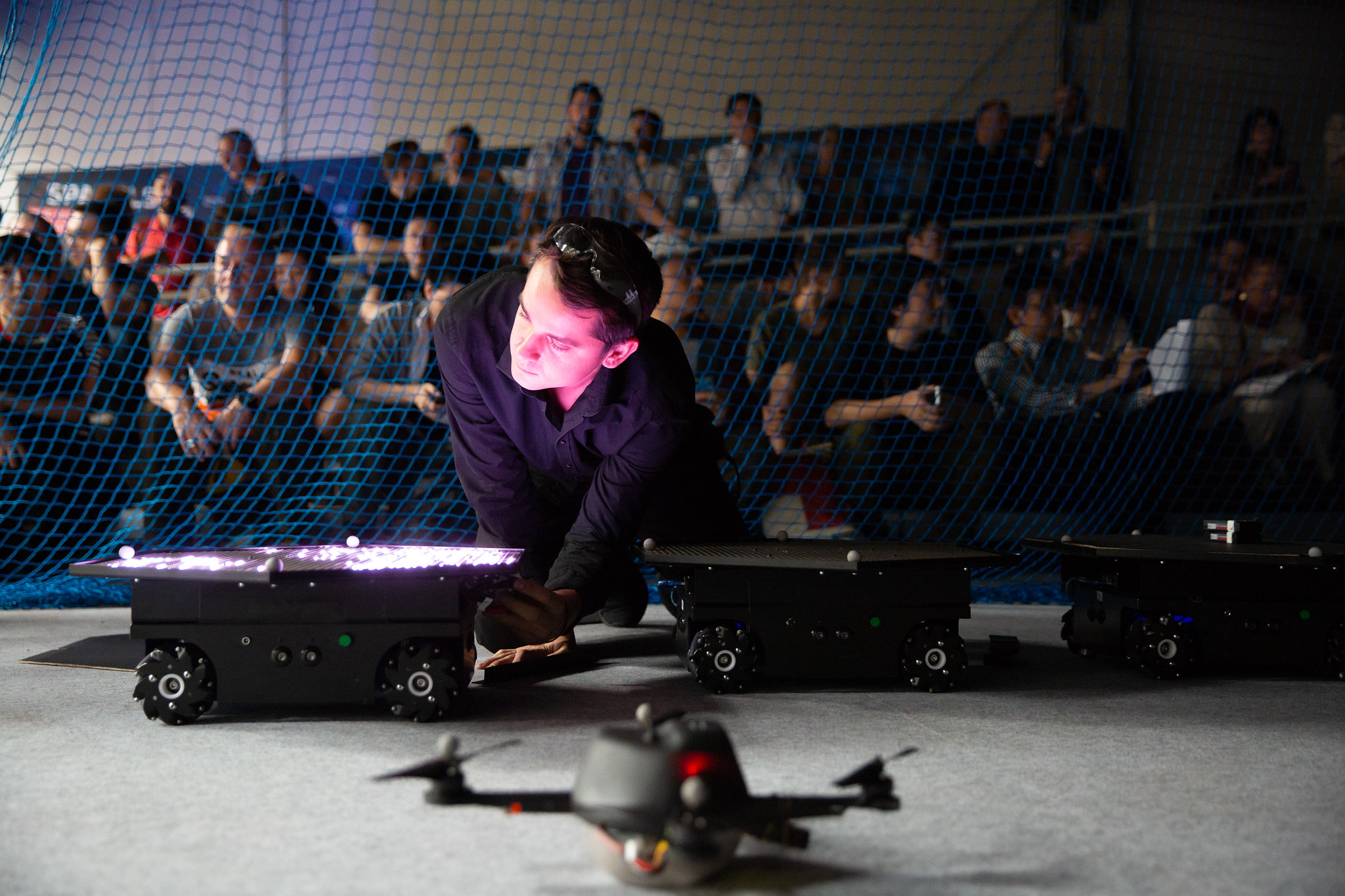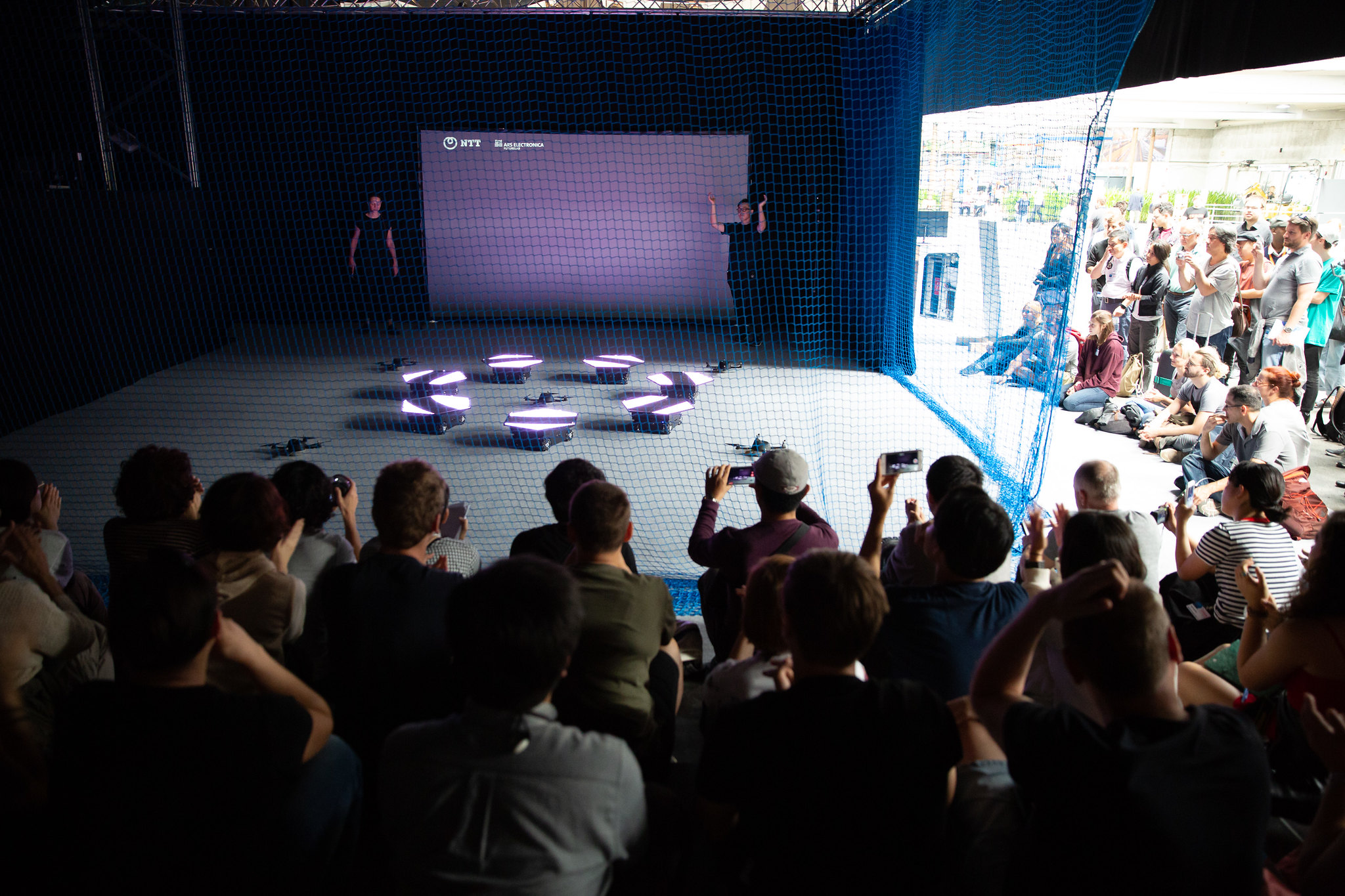Swarm Arena is the latest outcome of joint research efforts by the Ars Electronica Futurelab and Japanese telecommunications giant NTT. The collaboration started in 2017 with the aim to work on using unmanned aerial or ground vehicles (UAVs and UGVs) as a means of communication.
While the first project, Sky Compass, as well as its follow-up Swarm Compass focused mainly on navigation, public signage, facilitation of traffic and swarm intelligence, Swarm Arena now shifts the research question to creating an entirely new audience experience at sport events.
A first demonstration was shown at the NTT R&D Forum 2018 in Musashino, Tokyo, and finally also at the Ars Electronica Festival 2018 giving an insight into the possibilities by means of a physical demonstration using both drones and ground display bots. This combination allows for creating a new medium of (artistic) expression that is not bound by any canvas, but rather expands seamlessly from earth to sky.
Of Augmented and Virtual Arenas, Audience Participation and Multi-Cellular Robotic Organisms
Swarm Arena encompasses several concepts to enhance conventional sport events. The idea of the Augmented Arena suggests using ground bots to display measurements, metrics or outcomes, thus visualizing otherwise invisible sports big data right at the sports arena. Its counterpart, the Virtual Arena, proposes expanding the viewing experience to remote locations, creatively reimagining Public Viewing. Using swarm bots, athletes and events can be visually represented on moving displays to create a digital, real-time duplication of the game or competition.
The bots offer the potential for bigger swarms, moving beyond orchestrated formations of single entities to create multi-cellular robotic organisms. Ground and aerial bots act as cells or physical (kilo-)bits of the animated whole.
In their vision to “Animate Japan 2020 Together”, the Ars Electronica Futurelab and NTT are focusing especially on audience participation with the multi-cellular organism. How could a stadium full of spectators effectively interact with a large amount of bots, moving together as one? The synchronized movement of the robots forming an organism also opens up research questions in the field of spatio-temporal visual design under severe logistical constraints—an area in which the Ars Electronica Futurelab, with its successful Spaxels project, can draw on ample experience.
Credits
Ars Electronica Futurelab: Roland Aigner, Patrick Berger, Kerstin Blätterbinder, Manuel Dobusch, Samuel Eckl, Horst Hörtner, Peter Holzkorn, Maria Mayr, Nicolas Naveau, Hideaki Ogawa, Daniel Rammer, Raphael Schaumburg-Lippe, Simon Schmid
NTT: Hiroshi Chigira, Kyoko Hashiguchi, Shingo Kinoshita, Kenya Suzuki



